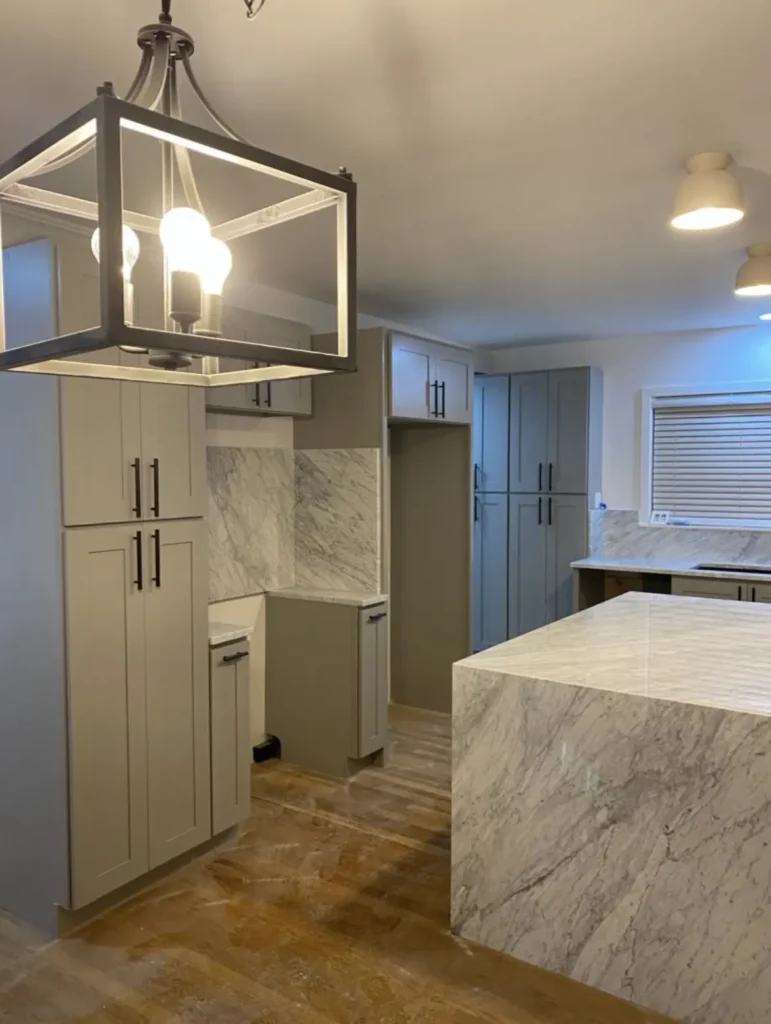When embarking on a kitchen remodel, the interplay of wood tones can transform the heart of your home into a warm and inviting space. The key lies in understanding the natural characteristics of wood and how they can complement each other to create a harmonious environment. Whether you’re drawn to the rich warmth of cherry cabinets or the cool serenity of maple, blending wood tones requires a keen eye for color, texture, and grain.
In this article, we’ll explore the nuances of combining different wood finishes, from the subtle art of matching undertones to the bold statement of contrasting grains. We’ll delve into the practical aspects of a kitchen remodel checklist and provide reliable home improvement tips to ensure your
Lynwood remodeling project is a resounding success.
Harmonizing Hues: Mastering the Mix of Wood Tones in Kitchen Spaces
Creating a cohesive kitchen design with multiple wood tones is akin to conducting an orchestra. Each wood, with its unique tone and grain, plays a distinct part in the overall aesthetic. The challenge—and the beauty—lies in orchestrating these elements to work in concert, producing a space that feels balanced and inviting.
To begin, consider the undertones of your wood selections. Woods with warm undertones, like oak or walnut, pair well with other warm hues, fostering a cozy atmosphere. Conversely, woods with cool undertones, such as ash or birch, resonate with similarly cool-toned woods, evoking a serene, modern vibe. The secret is to mix not just colors but also textures and finishes. A glossy finish on a dark wood island can contrast beautifully with matte-finished light wood cabinets, adding depth and interest to your kitchen.
As a home remodeling architect would advise, pay attention to the proportions of each wood tone. Dominant tones should be balanced with subtler accents to avoid overwhelming the space. For instance, a bold mahogany dining table can be softened with beech chairs and a light hickory floor. This approach ensures that no single element overshadows the others, allowing each wood to contribute its voice to the symphony of your design.
Incorporating remodeling solutions that prioritize functionality is also crucial.
Contractors for home renovation often recommend integrating wood tones through practical elements like butcher blocks, floating shelves, or built-in cutting boards. These features serve dual purposes—enhancing the kitchen’s utility while also enriching the visual tapestry of wood tones.
Remember, the goal of a custom home renovation is to reflect your personal style. Don’t shy away from unconventional pairings if they speak to you. A reliable home improvement specialist can guide you through the process, ensuring that your choices not only look good but also stand the test of time.
Finally, lighting plays a pivotal role in how wood tones interact. Natural light can bring out the warmth in wood, while artificial lighting can highlight different aspects of the grain and color. Work with a home improvement specialist to choose lighting that will showcase the wood in its best light, quite literally.
By considering these factors, your Lynwood remodeling project will not just meet the functional needs of a kitchen but also capture the essence of your unique taste, creating a space where memories are made and shared.
The Art of Wood Blending: Creating Cohesion in Multi-Tone Kitchen Designs
The artistry of blending wood tones in a kitchen goes beyond mere aesthetics; it’s about creating a cohesive narrative that tells the story of your home. Each piece of wood, with its unique hue and history, contributes to the overall tapestry of your kitchen’s design. The challenge is to weave these individual stories into a single, harmonious picture.
Imagine walking into a kitchen where the cabinets, flooring, and furniture are not just randomly chosen pieces of wood but carefully curated elements that speak to each other. The light, airy feel of a birch cabinet door can be grounded by the earthy presence of a walnut countertop. The subtle grain of ash flooring can provide a quiet backdrop to the dramatic statement of an ebony island.
In this dance of tones, balance is key. A home remodeling architect would suggest using a dominant wood tone as the foundation and layering in accent tones for depth and contrast. For example, a kitchen predominantly featuring cherry wood can be accented with touches of honey-toned pine to brighten the space and add visual interest.
Texture also plays a crucial role in wood blending. A home improvement specialist might incorporate a variety of finishes, from hand-scraped to smooth lacquered surfaces, to create a tactile experience that invites touch. This sensory approach to design enriches the visual appeal and makes the kitchen a place of comfort and connection.
As we consider remodeling solutions, it’s important to remember that wood is a living material. It responds to its environment, changing over time, and this evolution should be embraced. A quality home improvement involves selecting woods that will age gracefully together, developing a patina that adds character to the kitchen.
For those embarking on a Lynwood remodeling project, the integration of wood tones is a journey of discovery. It’s about finding the right balance between contrast and harmony, tradition and innovation. It’s about crafting a space that feels both timeless and timely—a place that reflects the soul of your home.
With thoughtful planning and a keen eye for detail, your Lynwood remodeling project can achieve a seamless blend of wood tones that will make your kitchen not just a room, but a living work of art.

